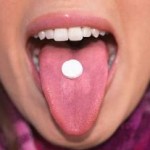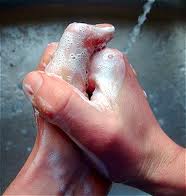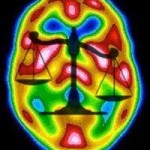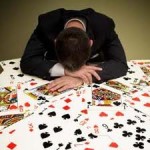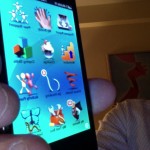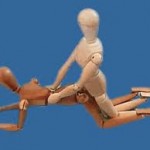Hi again. Last post I argued that the growth of addictive behaviour takes place at several scales. A “real-time” scale of minutes or hours, approximately, and a much slower scale that we can properly call “development” — something that takes place over months or years. And perhaps other scales as well.
I realize now, as then, that the picture I painted was not only dense and abstract but also incomplete. I fleshed out the real-time scale, but not the others.
Since most of us have been or still are “addicts,” the real-time scale is probably the most familiar and the most upsetting and frightening to contemplate. Here’s how I summarized it last post:
Attraction leading to craving, leading to pursuit, leading to…a brief period of pleasure or relief, followed by more attraction and craving. In other words, wanting leading to getting, leading finally to loss or emptiness, which leads once more to wanting.
I didn’t cover it last post, but I think there is an even faster scale of addictive cycling, which we particularly see with certain drugs (e.g., cocaine), with binge eating, and probably with gambling. For these addictions, the “reward” is not long-lasting, so the whole cycle of craving, doing, and loss can repeat itself every 10-20 minutes. This may also describe addictive drinking, when the satisfaction of the last drink rapidly fades and the urge for the next one rapidly grows.
We’ve also talked about the rapid brain changes that take place when we are in the clutches of this spiralling pattern — for example the shift from default mode activation to the rapidly rising activation of the ventral striatum (v.s. or nucleus accumbens), fueled by dopamine from the VTA (the ventral tegmental area in the midbrain), and accompanied by lots of action in the prefrontal cortex (PFC, especially orbitofrontal/ventral regions) and the amygdala (that almond-shaped repository of emotional associations).
But what about the developmental scale? That’s where the big picture of addiction gets drawn, first in broad brush strokes and then with the details more and more fleshed out. What changes over months and years, as we become addicts? Does this process really show the same sequence of states we can trace in real time? Do brain changes really follow the same pattern? The answer, I think, is yes, and this is a very important issue.
Many prominent addiction neuroscientists theorize about developmental changes in the brain. And many of them point to those changes as evidence for the argument that addiction is a disease. As you know, I don’t call addiction a disease, but it is like a disease in some ways, and the slow, insidious sequence of brain changes bring us face to face with this perplexing definitional challenge.
So here’s a rough sketch of the developmental changes in brain and mind that take place as we become addicts:
1. At the start, like most other people, we spend a lot of our time in the default mode network, daydreaming, rehearsing things we’d like to say and do, imagining our lives, past and future. In other words, our brains start out “normal,” except that addicts spend more and more time in the default mode, as focused attention gives way to fantasy. Over weeks or months, we find ourselves indulging in fantasies of getting or doing that one special thing. We find ourselves floating away more often on unbidden thoughts — “what if…?” — while we’re supposed to be reading, writing, calculating, buying, selling, or whatever it is.
2. As time goes by, and we keep going back to that special “pastime,” we find that the drugs, drink, food, or gambling isn’t just fun anymore. It’s more than fun. It makes us feel better than we could have felt doing anything else — so it seems. Now the fantasies — the thoughts, memories, images, and stimuli related to our thing of choice — become more and more compelling. They take on unprecedented power to switch our thinking from a daydreaming mode to a highly focused mode, where sharp attention and motivational thrust join forces, and we start to crave and to make plans.
The brain change associated with this stage is called incentive sensitization. Our brains become more and more sensitized to specific cues and reminders that rapidly trigger the incentive to go, do, get, score, acquire…. I’ve written about this in detail elsewhere. In a nutshell, a whole lot of cells in the nucleus accumbens (NAcc, or ventral striatum) are getting more and more strongly linked to the the cells in perceptual (posterior) cortex that represent coke, or sex, or booze, and many of those linkages run right through the amygdala, which records the hot flush of emotional potency that goes with them. Now those specific synapses in the NAcc, and between the NAcc and the prefrontal/orbital cortex, and between the NAcc and the amygdala, start to multiply. Those synapses, those hundreds of millions of connections, are all shouting “cocaine!” or “sex!” or “vodka!” more and more loudly as they grow fatter and stronger — by sucking up the dopamine that was designated for alternative synapses, representing other goals, other wishes, now fading in comparison.
3. The period of increased craving/planning and procuring, of increased desire and demand, may continue to grow for weeks, months and even years, before impulse turns to compulsion. It’s not that I really want to, it’s that I really have to. Now the anticipation of the “drug reward,” or “drink reward,” or whatever, is actually replaced. Now what’s driving our thinking and behaviour is the enormous anxiety of a need that has to be fulfilled. Attraction, anticipation, planning, and behaviour have already been set in motion, and now any doubts or drawbacks feel like temporary obstacles — “temporary” because they have to be overcome. It becomes paramount to complete the behavioural sequence. To leave it hanging feels like being trapped in suspended animation: nowhere else to go, nothing else to do.
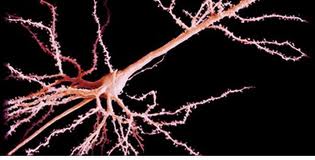 The brain changes that takes place when impulsive turns to compulsive have been worked out in animal research, and powerful new models are appearing in the literature. The striatum — whose job it is to initiate behaviour — has a dorsal region and a ventral region, which you can imagine as a northern region and a southern region. The dorsal region is in charge of automatic behaviour sequences triggered by a stimulus. This is not where new learning takes place. Rather it’s where old learning gets packed into habit, and habit gets triggered by cues or stimuli, from inside our heads or from the outside world. As synapses in the dorsal striatum start to become sensitized to addictive cues, they join in a network with the nucleus accumbens/ventral striatum and the amygdala. They suck up additional dopamine — now from another little dopamine factory called the substantia nigra — a factory designed to power behaviour directly, without having to wait for the rest of the brain to come on board.
The brain changes that takes place when impulsive turns to compulsive have been worked out in animal research, and powerful new models are appearing in the literature. The striatum — whose job it is to initiate behaviour — has a dorsal region and a ventral region, which you can imagine as a northern region and a southern region. The dorsal region is in charge of automatic behaviour sequences triggered by a stimulus. This is not where new learning takes place. Rather it’s where old learning gets packed into habit, and habit gets triggered by cues or stimuli, from inside our heads or from the outside world. As synapses in the dorsal striatum start to become sensitized to addictive cues, they join in a network with the nucleus accumbens/ventral striatum and the amygdala. They suck up additional dopamine — now from another little dopamine factory called the substantia nigra — a factory designed to power behaviour directly, without having to wait for the rest of the brain to come on board.
So you see? There is a direct parallel — a self-similarity — between the developmental changes that take place in the structure of these systems and the real-time progression that takes place as these systems get activated, one after another.
Kinda scary. These brain changes are real, at both scales, and the underlying structural “wiring” may never be completely reversible. But we do have the power to overcome these biological processes, along with the feelings and actions they generate. Next post, I’ll show how self-control, and the brain changes that power it, also evolve with time, changing our lives for the better.
 A few posts ago I commended Bhagavan Das to you. I called him: “that wise / spiritual / contemplative / meditative dude with a huge beard.” This was in relation to the problem of self-control.
A few posts ago I commended Bhagavan Das to you. I called him: “that wise / spiritual / contemplative / meditative dude with a huge beard.” This was in relation to the problem of self-control. If you click on this link you will find yet another mirage: a guy who came across as wise and spiritual, but who looks, on closer inspection, to be a bit of a self-serving, devious shadow puppet. Someone who is not even close to what he appears to be.
If you click on this link you will find yet another mirage: a guy who came across as wise and spiritual, but who looks, on closer inspection, to be a bit of a self-serving, devious shadow puppet. Someone who is not even close to what he appears to be.


